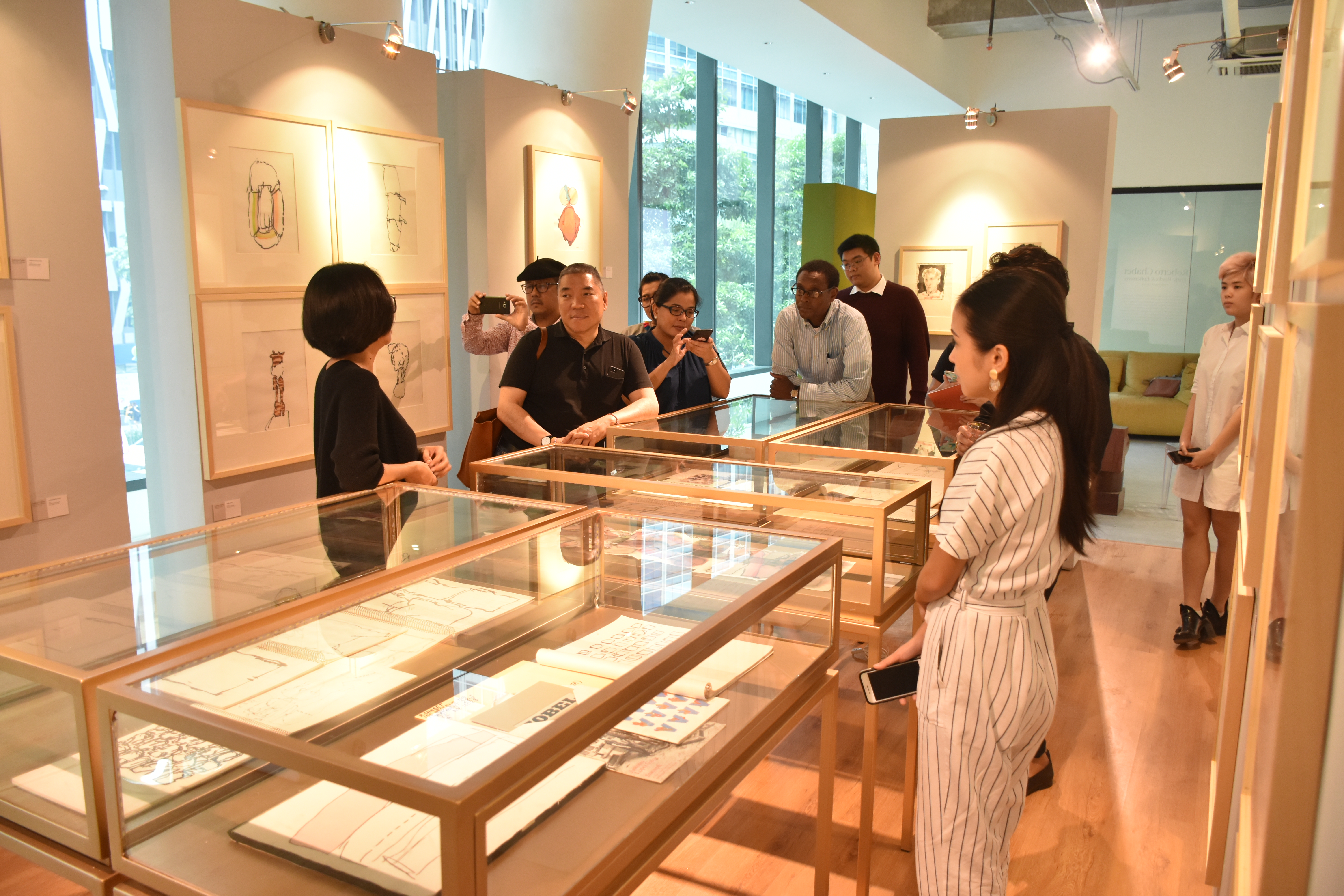By David Belmonte
One can say that art immortalizes the artist, but Roberto Chabet believed that art is something that is only appreciated for a fleeting moment. Afterwards, it becomes nothing more than a memory.
A curious box came into the possession of Salcedo Auctions – one which contained a collection of contemporary Filipino artist Roberto Chabet’s unreleased and untitled works. It was only fitting that Ringo Bunoan, an artist and a former student of Chabet’s, held a talk titled “Roberto Chabet: Early Works & Ephemera” at the Salcedo Auctions private gallery at the NEX Tower.
It was there that Bunoan detailed Chabet’s style and how several of his works revolved around impermanence and decay, and that Chabet himself was not the sort of person who wanted to be “a national artist” or a mere title. The subject matter of his work and the way in which he saw himself spoke volumes of his character. But the question remains: who exactly is Roberto Chabet?
Among the nation’s great minds, Chabet was a Renaissance man who dabbled with architecture, photography and writing. Even as he passed on in 2013, it is apparent that Chabet had left his mark on the art industry, whether it was through his works or through the sheer influence he had on his students and colleagues. Bunoan commented that Chabet was a “very systematic” mentor, and would often tell her that “art is for the moment.”
Bunoan has been archiving Chabet’s work for more than ten years. Chabet held a special place in her heart as her mentor, and she remarked that “everything I know about art and curating comes from him.” Even though Chabet himself had already passed on, Bunoan emphasized that “things still appear out of nowhere.”

The collection of the art present at the exhibition is one such example, as it came from Luis Romero – a friend of Chabet’s who housed him in New York in 1968. The two were so close that Chabet made and gifted two portraits to Romero. And it is important to note that he rarely made portraits.
Romero’s collection was described as a “time capsule” of Chabet’s career and as his “process in art making”, revealing the inner workings of his mind. The bulk of the work on display was from the ’60s, an era of experimentation and abstraction, and Chabet was still in the midst of finding his artistic vision. He was still finding his way during the period, exploring numerous styles and methods to find one that he could call his own.
As a teacher, he would encourage his students to question their frameworks by deconstructing and reconstructing them on the daily, a practice which he himself took very seriously.

According to Bunoan, he was capable of creating a hundred drawings every day, and she argued that “many artists of his generation put importance on daily practice.” The sketchbooks present at the installation attest to this, revealing how he drew one shape over and over again to explore all of its permutations.
Chabet would experiment by exploring a shape’s possibilities, searching for patterns and ways in which it can evolve so that he can incorporate them into his work. The result was a timeless, signature style. Bunoan was able to recognize Chabet’s works, even if a large majority of them were left unsigned, and that attests to the significant role he played in her life, not just as a mentor, but as an artist.
Of course, there was more to the exhibition than a collection of Chabet’s unreleased artworks. Bunoan states that the purpose of her talk and the exhibition was “to make him more real”, not with grand stories of his life as an artist, but with mundane things, such as documents and facts. Some of his personal items, like his letters, booklets and notebooks, are up on display because Bunoan believes it is important to “show the sense of that time and what was happening.” She shared Chabet’s story by detailing why he was in New York during the ’60s, as well as the sort of person he was when he wasn’t making art.

Bunoan also underscored that Chabet was in New York on the behalf of the Cultural Center of the Philippines. He was sent to the United States to study museum collections, and he would detail his expenses as well as what he learned in his notes.
“He practically wrote every day,” says Bunoan. “A lot of his journals had studies of artworks but a lot of them are also just about his regular life.”
Curiously enough, Bunoan described Chabet as someone who was “Obsessive-compulsive (OC)”, and by this, she meant that he loved to make lists and kept a lot of diaries. He made it a point to write in them on the daily.
Chabet’s written work humanizes him in a way that his art would not otherwise be able to accomplish and his true character is revealed as someone who is brilliant but unpretentious—talented yet modest. He was a true blue artist who spent time after time practicing, mastering the craft through hard work and sheer ingenuity; it is established that a seldom few national artists reach the same level of fame and influence as Roberto Chabet, the man behind the genius.
This collection of Chabet’s works and personal items will remain on display until Saturday, July 6 at Salcedo Auctions private gallery, NEX Tower, 6786 Ayala Avenue. The exhibition will be open from 9:00 a.m. to 6:00 p.m. from Tuesday to Friday, and 9:00 a.m. to 4:00 p.m. on Saturday.






